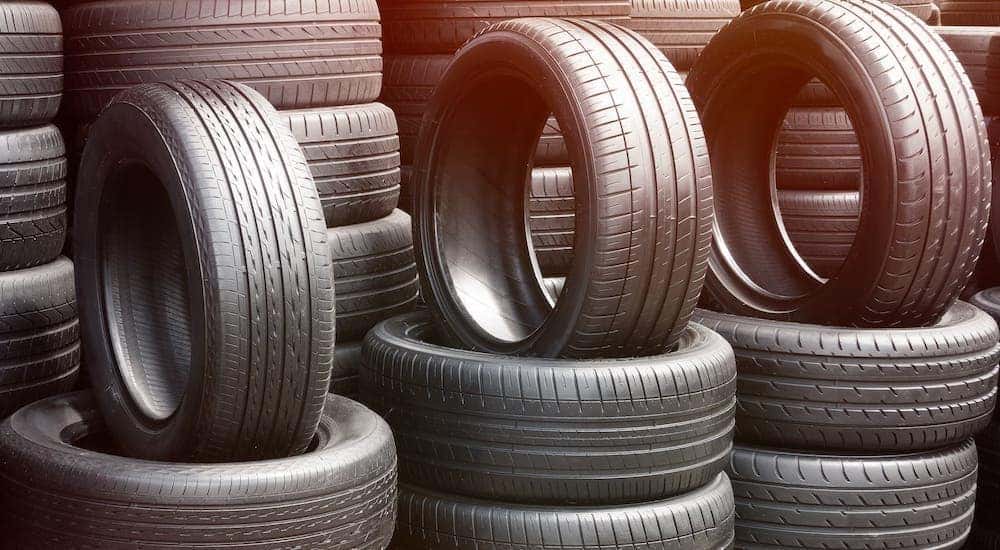Top Quality Tire Shop Morris: Your Go-To Location for Tire Demands
Top Quality Tire Shop Morris: Your Go-To Location for Tire Demands
Blog Article
Tire Solution: Understanding Tire Stress Monitoring Equipments
Recognizing Tire Pressure Surveillance Solutions (TPMS) is an important aspect of keeping ideal car performance and safety on the roadway. With improvements in automobile innovation, TPMS has actually become a typical function in modern-day lorries, supplying real-time information on tire pressure levels.

Significance of TPMS
The value of Tire Pressure Tracking Solutions (TPMS) hinges on their capacity to improve lorry safety and security and efficiency through real-time tracking of tire stress degrees. Keeping the right tire pressure is important for ensuring optimal handling, braking, and general safety and security of an automobile. TPMS supplies drivers with immediate responses on any kind of overinflated or underinflated tires, enabling for timely modifications to be made.
Elements of TPMS
Making up different necessary components, a Tire Pressure Tracking System (TPMS) works as an advanced safety function in contemporary lorries. The main parts of a TPMS include sensing units, a control component, and a warning indicator. Sensing units are commonly situated in the tire shutoff stem or connected to the wheel assembly, where they determine tire pressure and transmit data to the control module. The control module procedures this info and triggers a caution if it identifies substantially reduced stress in any one of the tires. The caution indication, commonly a sign on the dashboard, notifies the motorist to check the afflicted tire or tires. Some advanced TPMS versions likewise show the actual tire stress analyses for each tire, offering vehicle drivers with real-time info to make sure optimal tire performance and safety and security. By keeping track of tire stress constantly, TPMS helps stop mishaps, decreases tire wear, and enhances gas efficiency, making it an important element for lorry security and performance.
Sorts Of TPMS

On the other hand, indirect TPMS depends on the automobile's wheel rate sensing units to monitor tire stress. This system finds underinflation by comparing the rotational speeds of the wheels. Indirect TPMS is less pricey than direct TPMS, as it utilizes existing sensors within the lorry.
While direct TPMS uses more precise analyses, indirect TPMS is simpler in layout and commonly needs much less upkeep. Both systems have their advantages and restrictions, and the choice between them often relies on factors such as cost, lorry make, and personal preference. Comprehending the differences in between these 2 sorts my review here of TPMS can help lorry proprietors make informed choices regarding tire maintenance and safety and security.
TPMS Upkeep Tips
Conduct routine checks on the tire stress degrees and contrast them with the TPMS readings to ensure they are constant. During tire turning or replacement, make sure that the TPMS components are managed carefully to protect against any potential damage. If the TPMS advising light brightens on the dashboard, deal with the issue quickly by examining the tire pressures and the overall system for any type of mistakes.
Advantages of Proper Tire Stress
Keeping correct tire stress, as emphasized in TPMS Maintenance my review here Tips, is essential for enjoying the countless benefits related to ideal tire stress levels. Among the key advantages of maintaining the appropriate tire pressure is enhanced fuel efficiency. When tires are correctly blown up, there is much less rolling resistance, leading to much better fuel economy. Additionally, correct tire pressure ensures even tire wear, expanding the life-span of the tires and advertising much safer driving conditions. With the best tire stress, vehicles likewise have much better handling and traction, particularly in negative climate problems. This can enhance total driving performance and safety for the vehicle driver and travelers. Additionally, maintaining ideal tire stress can add to a smoother and extra comfy trip by decreasing resonances and sound brought on by underinflated tires. Finally, the advantages of proper tire stress surpass just tire durability; they incorporate improved gas efficiency, improved safety and security, much better vehicle efficiency, and total driving comfort.
Conclusion
To conclude, recognizing tire stress surveillance systems (TPMS) is important for keeping ideal tire stress and ensuring lorry safety and security. By recognizing the importance of TPMS, being acquainted with its components, recognizing the different kinds available, adhering to appropriate maintenance ideas, and realizing the advantages of preserving appropriate tire stress, vehicle drivers can enhance their driving experience and lengthen the life expectancy of their tires. Correct tire pressure is vital to secure have a peek here and reliable automobile procedure.

Report this page